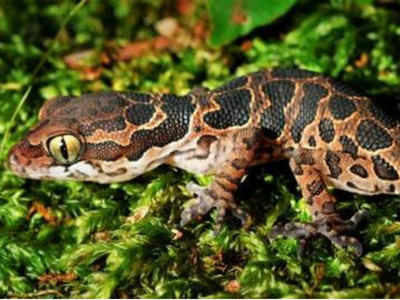- News
- Science News
- Gecko-inspired adhesives may help robots scale new heights
This story is from January 15, 2018
Gecko-inspired adhesives may help robots scale new heights
Scientists, including those of Indian origin, have developed a dry adhesive that mimics toe pads of geckos, which could allow robots to defy gravity and climb steep inclines. Animals, such as geckos, can easily climb up walls and walk across ceilings.

Representational Image
SINGAPORE: Scientists, including those of Indian origin, have developed a dry adhesive that mimics toe pads of geckos, which could allow robots to defy gravity and climb steep inclines.
Animals, such as geckos, can easily climb up walls and walk across ceilings.
The unique toe pads of geckos help them quickly attach and detach from surfaces. Gecko toe pads are covered with bristle-like layers of a stiff material called keratin, which helps it to stick.
Each pad is covered with microscopic pillars, which then branch out at the tips into even smaller structures.
Some methods involve the use of layers, but the first layer is usually damaged as successive ones are applied. Other methods are not easily scaled up.
Scientists including Hemant Kumar Raut and Avinash Baji from Singapore University of Technology and Design wanted to create a dry adhesive that was ultra-sticky but also simple to fabricate in large batches.
The researchers made a dry adhesive with stiff polycarbonate using a nanoimprinting technique to build web-like layers.
This method is cost-effective, easy to perform and is scalable. To prevent damage to the first layer, the team used a sacrificial layer, which was dissolved away after the second layer was applied.
In repetitive attachment and detachment tests, only a 20 per cent decline in stickiness occurred after 50 cycles. This level of adhesion lasted for up to 200 cycles.
The team also placed the adhesive film on the feet of a miniature robot, which moved with ease up a 30-degree incline.
Animals, such as geckos, can easily climb up walls and walk across ceilings.
The unique toe pads of geckos help them quickly attach and detach from surfaces. Gecko toe pads are covered with bristle-like layers of a stiff material called keratin, which helps it to stick.
Each pad is covered with microscopic pillars, which then branch out at the tips into even smaller structures.
Scientists have previously manufactured dry adhesives with similar properties, but they have not been as sticky as gecko toes.
Some methods involve the use of layers, but the first layer is usually damaged as successive ones are applied. Other methods are not easily scaled up.
Scientists including Hemant Kumar Raut and Avinash Baji from Singapore University of Technology and Design wanted to create a dry adhesive that was ultra-sticky but also simple to fabricate in large batches.
The researchers made a dry adhesive with stiff polycarbonate using a nanoimprinting technique to build web-like layers.
This method is cost-effective, easy to perform and is scalable. To prevent damage to the first layer, the team used a sacrificial layer, which was dissolved away after the second layer was applied.
In repetitive attachment and detachment tests, only a 20 per cent decline in stickiness occurred after 50 cycles. This level of adhesion lasted for up to 200 cycles.
The team also placed the adhesive film on the feet of a miniature robot, which moved with ease up a 30-degree incline.
End of Article
FOLLOW US ON SOCIAL MEDIA
